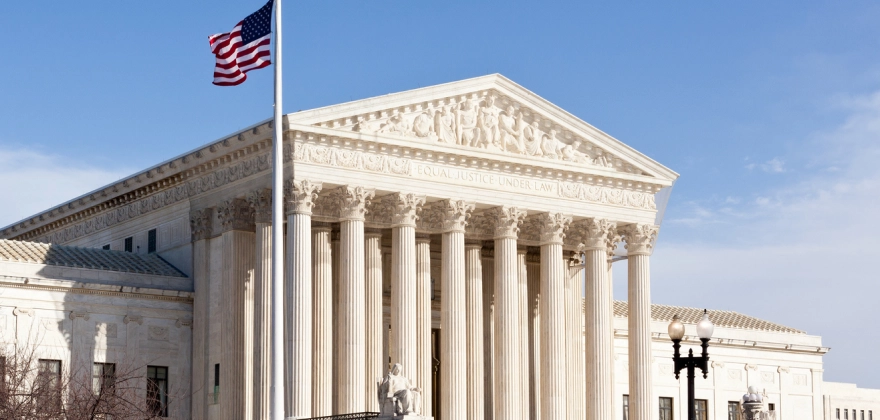Supreme Court Imposes Formidable Barrier to Enforcing Medicaid Rights, Demanding New Strategic Approaches: Medina v. Planned Parenthood South Atlantic

On June 26, the Supreme Court issued its landmark decision in Medina v. Planned Parenthood South Atlantic, altering the landscape for Medicaid beneficiaries and providers seeking to bring litigation under the Medicaid Act. In a 6-3 decision authored by Justice Gorsuch, the Court held that the Medicaid Act’s “free choice of provider” provision (42 U.S.C. § 1396a(a)(23)(A)), does not contain language clear enough to create a right that can be enforced by individuals through Section 1983 civil rights litigation. The ruling reverses a Fourth Circuit decision and dramatically curtails the ability of stakeholders to hold states accountable in federal court.
End of An Era: A Decades-Long Trend Culminates in Medina
This decision is not an isolated event but is the culmination of a judicial trend our firm has litigated against for over two decades. The Court has increasingly narrowed the avenues for challenging state non-compliance with the Medicaid Act.
The zenith for private enforcement was the Court’s 1990 decision in Virginia Hospital Association v. Wilder, which found a private right of action to challenge state Medicaid reimbursement rates under Section 1983. Seven years later in Blessing v. Freestone, the Court established its three-part test for determining whether a statutory provision creates privately enforceable rights.
But since Gonzaga v. Doe, in 2002, the Court has demanded that Congress use “clear” and “unambiguously conferred rights-creating” language for a statute to be enforceable under Section 1983. This doctrine was solidified in Armstrong v. Exceptional Child, which directly foreclosed suits under the Supremacy Clause to enforce Medicaid provisions. After Gonzaga and Armstrong, the writing was on the wall.
Then, in 2023, the Court decided Health and Hospital Corporation of Marion County v. Talevski, holding that the Federal Nursing Home Reform Amendments Act (FNHRA), a part of the Medicaid Act, does contain a private right of action. The distinction hinged on the statutory text: the FNHRA provisions in Talevski repeatedly used the explicit word “right” (e.g., the “right to be free from”). Despite finding an enforceable right, the Talevski court reiterated that the precedent sets a “demanding bar,” and that spending clause legislation does not create enforceable rights “as a matter of course.” In sum, Talevski stands for the proposition that while the Medicaid Act can confer a private right of action, such instances are extremely rare. The free choice of provider provision in Medina, by contrast, lacks this explicit “rights” terminology—a fact that holds true for many of the most significant provisions of Section 1396a of the Medicaid Act.
Understanding The Decision in Medina
Writing for the majority, Justice Gorsuch explicitly repudiated the reasoning of Wilder and establishes that only in “atypical case[s],” such as Talevski, will spending clause legislation like the Medicaid Act be found to create privately enforceable rights. The Court reasoned that to put states on notice of their potential liability, a statute must contain explicit “rights-creating language,” setting an exceedingly high bar.
The majority built the decision on the legal fiction that the “typical remedy” for state non-compliance is the termination of federal funds. This reasoning ignores the practical reality that funding termination is a “nuclear option” that punishes the very beneficiaries the Medicaid Act is meant to protect. This is why the federal government almost never uses it, leaving judicial review as the only viable enforcement mechanism.
The Court explained that the Medina plaintiffs failed to meet the high bar because the free choice of provider provision does not “clearly and unambiguously” use “rights-creating terms.” What makes Medina’s impact so concerning is that the free choice of provider provision is structured like most other requirements in Section 1396a: it is written as a directive to states. By finding this typical language insufficient, the Court signaled that it will be exceedingly difficult to establish enforceable rights for most provision in Section 1396a, unlike the unique, “rights”-laden text at issue in Talevski.
In a sharp dissent, Justice Jackson, joined by Justices Sotomayor and Kagan, argued that the majority ignores the free choice of provider provision’s plain text and historical context, which was more than sufficient to meet the Court’s test for an enforceable right.
Navigating the New Reality
The practical impact of Medina for Medicaid providers and the vulnerable populations they serve should not be understated. It significantly narrows the path for using Section 1983 to challenge clear violations of most the major substantive requirements in Section 1396a. This is because, as noted, the statute is largely written as a series of directives to states regarding their state plans, rather than using explicit terms about the “rights” of providers and beneficiaries they serve. States are now left with enormous discretion to act in ways that may violate federal law and leaving aggrieved parties with little direct recourse through the courts.
This new landscape makes clear that while traditional litigation avenues are severely curtailed, the search for effective legal strategies is now paramount. The decision forces a strategic reassessment of all remaining avenues for ensuring state compliance, including a careful evaluation of novel legal theories and procedural postures.
This is particularly critical from a health equity perspective, as the populations disproportionately served by Medicaid are most at risk from unchecked state actions. With this ruling, the judiciary has largely stepped back from its oversight role, leaving CMS as the primary, and often sole, check on state Medicaid agencies.
Our firm, with its long history of litigating at the forefront of these issues, is actively analyzing the full implications of Medina. We are vigorously exploring avenues to continue advocating for our clients’ interests and ensuring the integrity of the Medicaid program. While this decision marks a setback for the rule of law in the Medicaid context, we are prepared for the challenge and committed to charting the path forward.
This article reflects the valuable input and collaboration of Pat Hooper and Rachel Zacharias.
Professional
For questions about how this decision affects your organization and to discuss strategic responses, please contact Paul Garcia, Erin Sclar, Lloyd Bookman, Patric Hooper, Alicia Macklin, Kelly Carroll, Rachel Zacharias, or your regular HLB contact.



